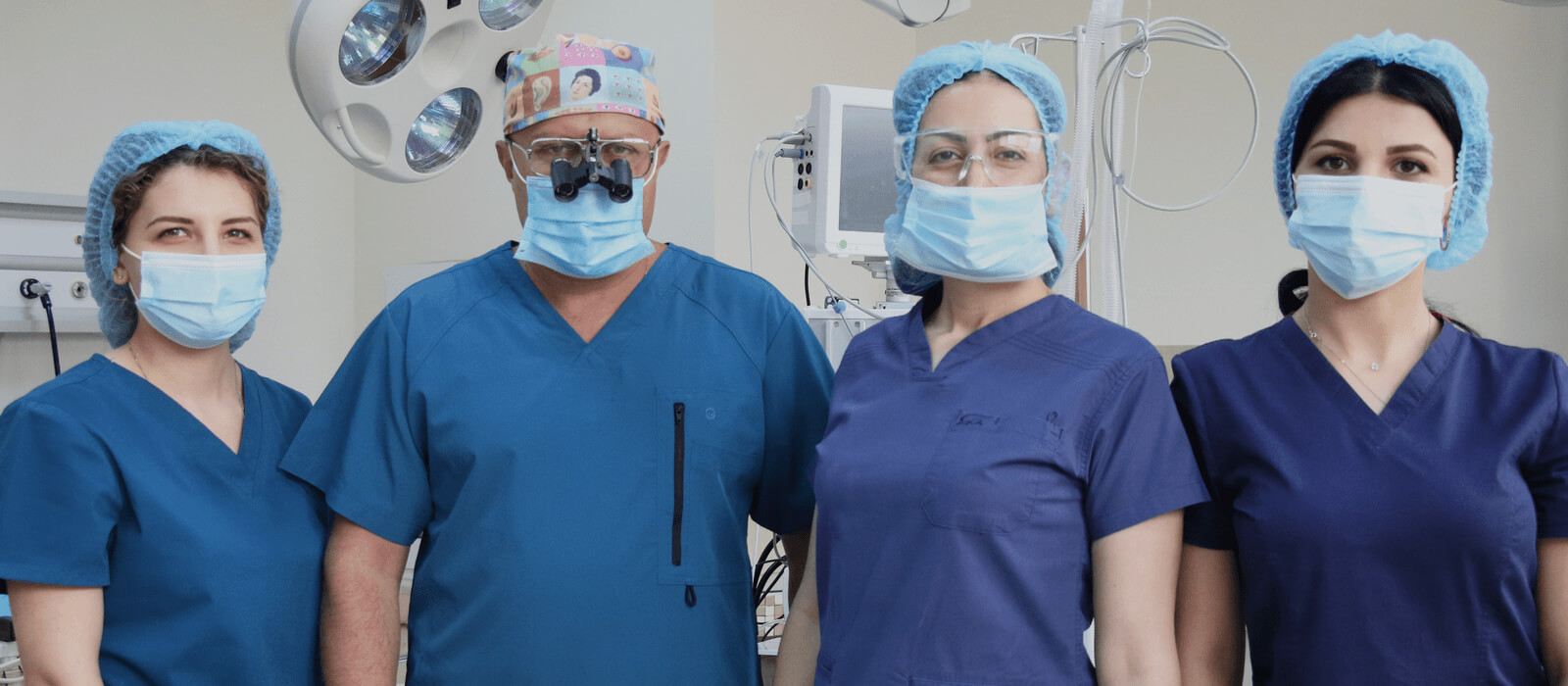Otoplasty (plastic surgery of the auricles)
Otoplasty in Yerevan, Armenia is a procedure to change the shape, position or size of the ears. It is performed at the age when the ears have reached their full size — usually after the age of five. In rare cases, it is performed as early as the age of three. If a baby is born with protruding ears, wearing an elastic bandage can successfully correct these problems if treatment is started immediately after birth. Otoplasty is usually performed on both sides to ensure optimal symmetry. Otoplasty does not affect hearing.
Possible complications:
Scarring. Although the scars are permanent, they are hidden behind the ears or in the folds.
Asymmetry. This may occur as a result of changes in the healing process. In addition, the operation does not 100% correct the existing asymmetry.
Disorders of the sensitivity of the skin of the auricle.
Problems with the sutures. The sutures used to fix the new shape of the ear can penetrate the surface of the skin and may need to be removed. This can cause inflammation of the affected area.
Hypercorrection.
Like any surgical procedure, otoplasty in Yerevan, Armenia, carries the risk of bleeding, infection, and an adverse reaction to anesthesia. An allergic reaction to surgical patches or other materials used during or after the procedure is also possible.
Preparation and consultation:
During the initial consultation, tell the surgeon about current and past health problems, especially ear infections. Please provide information about the medications you are currently or have recently taken. Also, mention the previous surgeries.
To determine the options for surgery, the doctor will examine your ears — including their location, size, shape, and symmetry. Photos will also be taken for your medical record.
Discuss your expectations. Explain your motivation for undergoing otoplasty, and outline your goals in terms of appearance. Make sure you understand the risks, such as possible overcorrection.
Food and medicine:
Avoid taking aspirin, anti-inflammatory medications, and herbal supplements that may increase the risk of bleeding.
Smoking reduces blood flow to the skin and can slow down the recovery process. If you smoke, your doctor will recommend that you quit before surgery and during the recovery period.
During the procedure:
Otoplasty methods in Yerevan, Armenia, vary depending on the required correction. The specific method chosen by the plastic surgeon will determine the location of the incisions.
After incisions, excess cartilage and skin are removed. The cartilage is then placed in the correct position and secured with internal sutures. Additional sutures will be used to close the incisions.
The whole process takes about 2 hours.
The recovery period:
After otoplasty, the ears will be covered with bandages for protection and support.
You will most likely feel discomfort and itching. Take painkillers according to doctor’s instructions. If you are taking painkillers, but your discomfort increases, contact your doctor immediately.
To avoid pressure on the operated areas, do not sleep on your side. Try not to rub and avoid pressure and stretching in the incision area. It is recommended to wear button-down shirts or shirts with loose collars.
A few days after the otoplasty, the bandages will be removed- the ears will probably be swollen and red. You will use a headband covering your ears at night for 2-6 weeks.
Talk to your doctor about the time of suture removal. Some types tend to dissolve. The rest are removed after a few weeks.
Consult a specialist about the timing of resuming the usual rhythm of life, bathing and physical activity.



